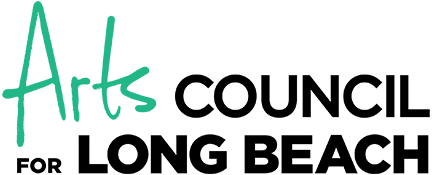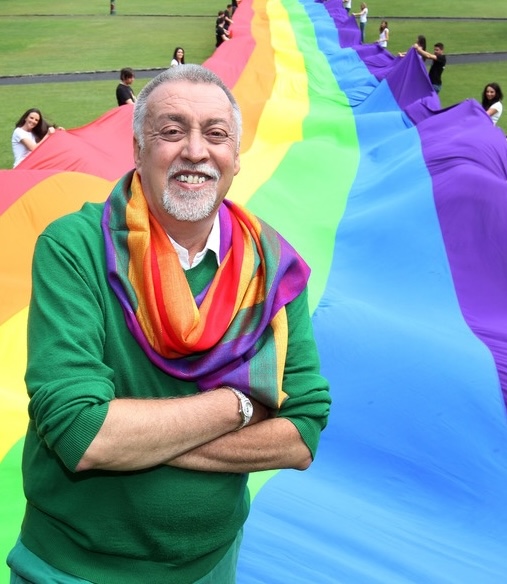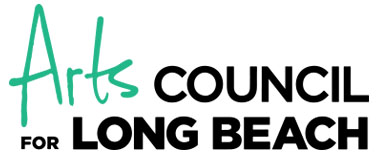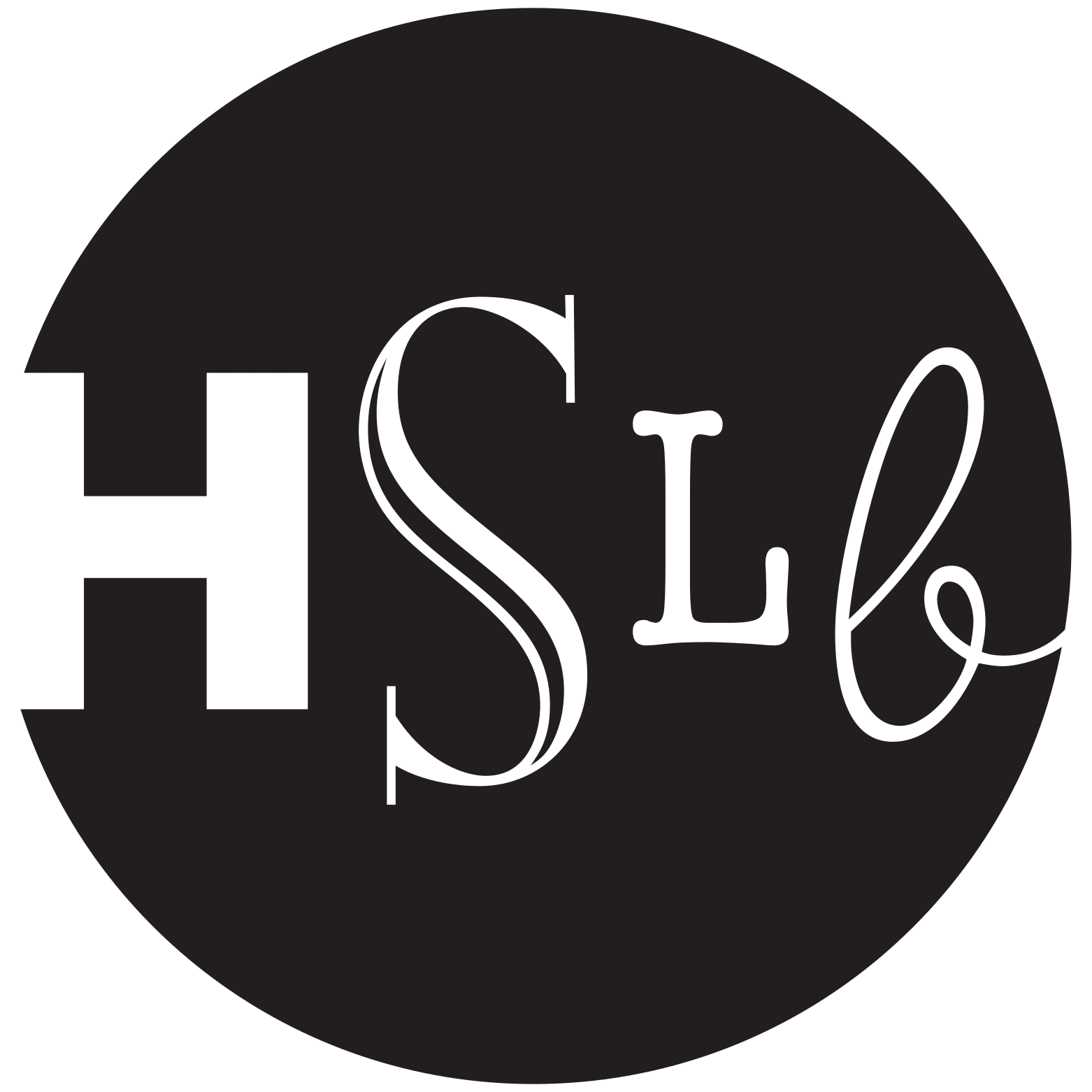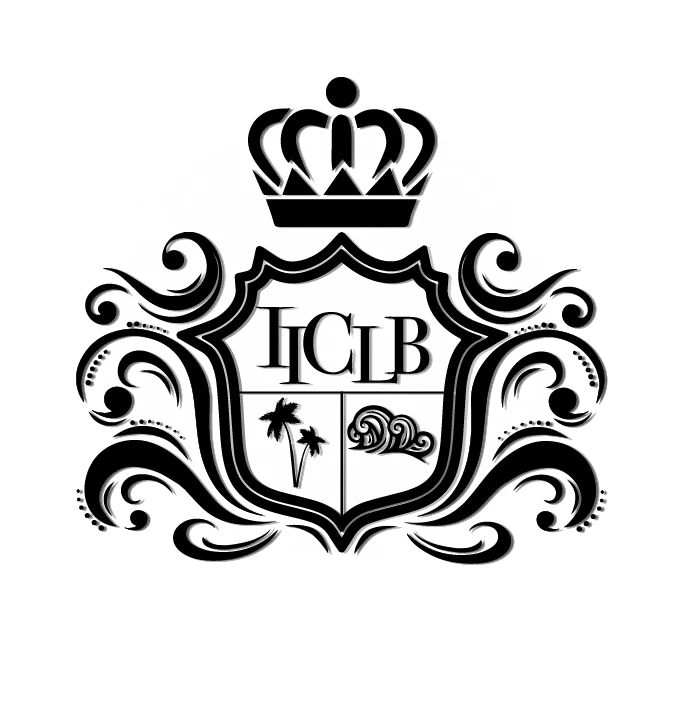Gilbert Baker. Photo courtesy Gilbert Baker Foundation.
ArtsLB Rainbow Hero
Gilbert Baker
“That light shines all the colors of the rainbow – take your own color and be just that.”
– Gilbert Baker
Over the next four decades, his creation would become embraced across the world as the universal symbol of the lesbian, gay, bisexual, and transgender (LGBT) movement.
Knowing who designed it, sewed it, and lived it makes it all the more glorious.
Their drag name was Butsy Ross. For a short time, he was a Sister of Perpetual Indulgence.
A lucky Vet who served the U.S. Army tour in San Francisco during the Vietnam War. He was out and honorably discharged long before DADT.
Gilbert Baker loved being gay, and his gift to his community has become an enduring symbol of unity, joy, and pride.
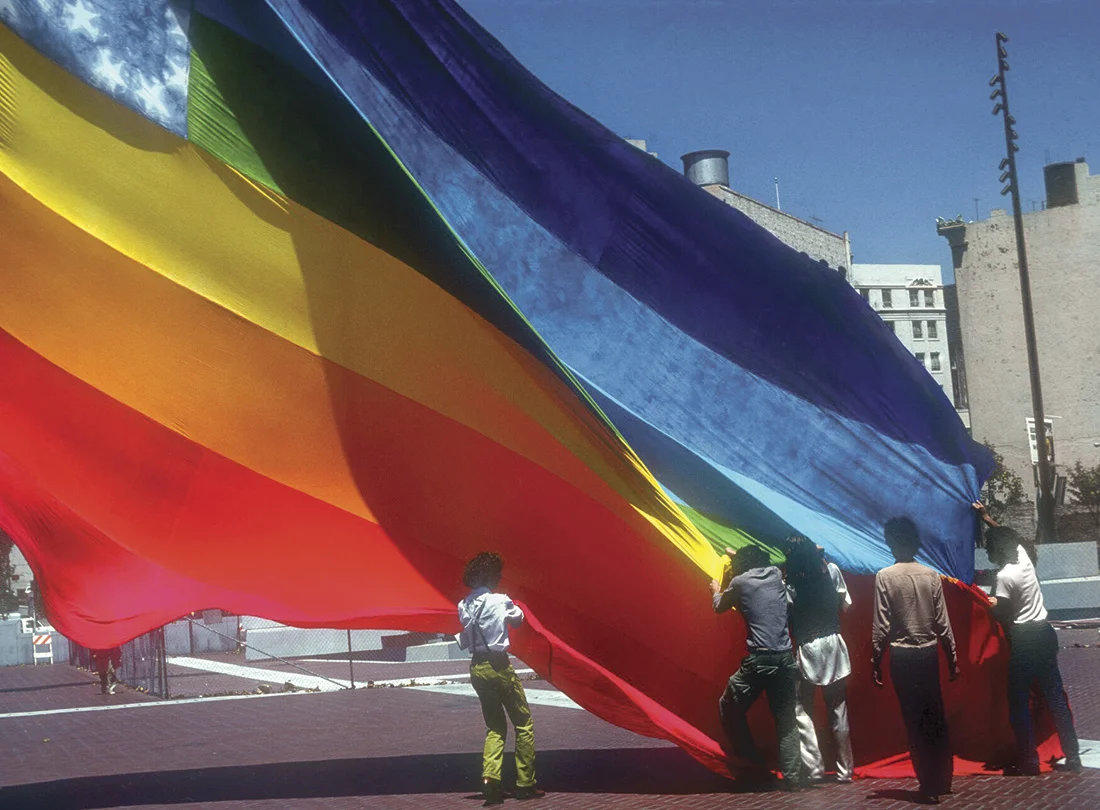
The Rainbow Flag is the universal symbol for You Are Welcome Here.
The Rainbow Flag, created by Gilbert Baker, debuted at San Franciso Pride, June 25, 1978. It flew over San Francisco City Hall when Harvey Milk worked there. Cleve Jones danced under it. It flew over Mauds and draped from the balcony at Stonewall Inn. Today it is at Michael’s craft store, Dodger stadium, and the White House. It is on onesies, designer shoes, and even beer cans.
Photo: Gilbert Baker and the original 1978 flags. Photograph by James McNamara.
“We were all in a swirl of color and light. It was like a rainbow.” – Gilbert Baker
An Enduring Symbol of LGBT Pride
The original Rainbow Flag debuted with eight colors. Each color had a unique meaning: Sex, Life, Healing, Sunlight, Nature, Magic/Art, Serenity, and Spirit. Shortly after its debut, hot pink (Sex) and turquoise (Magic/Art) were discarded due to fabric supply and display issues.
In 1979, the standard rainbow Gay Flag was standarized with six colors.
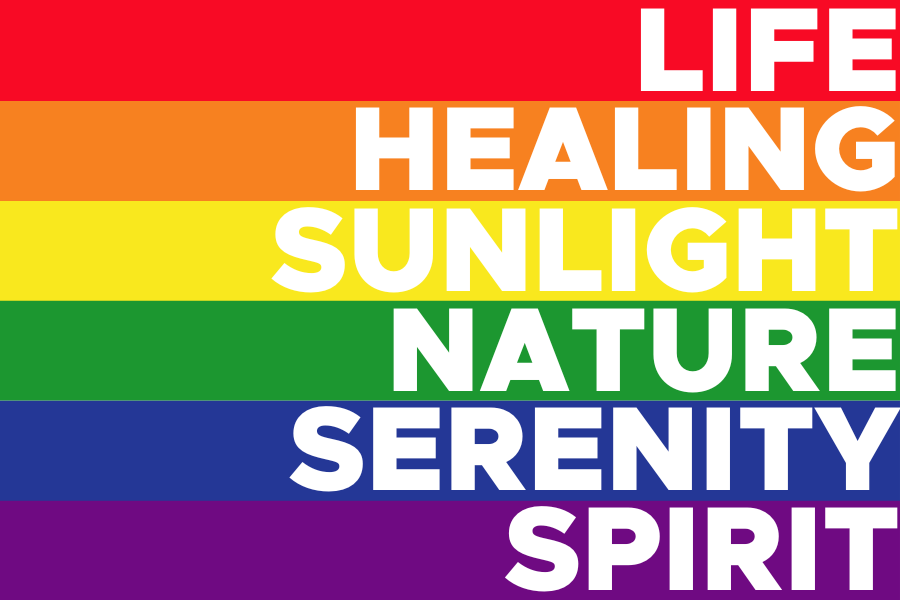
About Gilbert Baker
Gilbert Baker (1951-2017) was a political activist, designer, and flag-maker who in 1978 created the Rainbow Flag that has become the universal symbol of the LGBT (Lesbian, Gay, Bisexual, and Transgender) movement.
Born in 1950’s Kansas, Baker’s interest in art and fashion design in a conservative state alienated him from peers. After being drafted into the US Army, he encountered severe homophobia, but was eventually stationed in San Francisco, where he was able to openly embrace his identity as a gay man in the counterculture movement of the post-Stonewall era.
Following his military service, Baker applied his artistic skills to political activism, producing banners for anti-war and pro-gay marches and protests. Encouraged by friends and colleagues like San Francisco supervisor Harvey Milk, he particularly sought to replace the pink triangle used to identify homosexual men in Nazi concentration camps.
With the help of friends, Baker dyed and sewed the first Rainbow Flags, creating a new powerful symbol for the gay and lesbian community. On June 25, 1978, Baker raised the banners in United Nations Plaza at the San Francisco Gay Freedom Day Parade, marking a significant moment in LGBT history.
Baker’s career as a vexillographer (flag maker) only grew from there. San Francisco Mayor Dianne Feinstein commissioned him to design flags and banners for her first elected inaugural ceremony and Baker was commissioned to create the flags, banners and bunting for the 1984 Democratic National Convention at San Francisco’s Moscone Center.
In early 2018, the Gilbert Baker estate, administered by his sister Ardonna Baker Cook, convened an Advisory Committee to help evaluate and support various programs, events and product endorsements that would properly honor Gilbert’s legacy of LGBT pride, liberty and visibility. To learn more about Gilbert Baker, his legacy, and the work of the Gilbert Baker Foundation website, visit gilbertbaker.com
Get Updates About the Rainbow Heroes Public Art Project
Sign up for Rainbow Hero updates to get an email when we make announcements, host events, and more.
